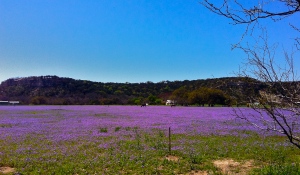Guardian Angel At Work in the Smokies
I often joke that I have a guardian angel looking out for me. But today I have a new example to support this allegation.
This was my day to drive to the cabin in the Smokies that I have rented for the month of April. What a gorgeous drive! Last night it rained and morning fog gave way to sunshine and warm temperatures.
I’m no stranger to the Smokies. My brother lives an hour or so to the east. He’s lived here for more than 30 years, and when I come down, we often hike somewhere in the area.
During the 5 years I served our congregation in Oak Ridge, Tennessee, I drove to The Mountain at least twice a year for our ministers’ gatherings and for other programs. I think I’m about 20 miles away from The Mountain, a camp and conference center affiliated with Unitarian Universalism. It’s an amazingly beautiful place, and the road between here and there passes several spectacular waterfalls on a road that’s not for the faint-hearted.
I have not been to this part of the Smokies for several years now. Driving here, I was again blown away with the beauty, especially at this time of emerging spring.
Getting to my cabin was tricky. I got to Franklin just fine, and the cabin is probably just a handful of miles from there as the crow flies. But there are many country roads and hairpin curves between here and there.
With some wrong turns, I finally got to the part where the blacktop turned into gravel. The road was very steep, and the directions said that the speed limit on the one-lane road is 12 MPH. As I was busy looking for signs and signals, and since my car doesn’t like steep hills, I was going slower than that. The instructions said, if you lose momentum, get to a flat pace and then gather momentum. Flat place??!!
Finally, I saw a sign that said ‘private drive’. I thought it meant the road I was on. There was a house way above the road with barking dogs and people on the deck. I stopped and asked for directions. They told me to proceed as I was going. Well, I had lost momentum and I was not at a flat place. They said to turn around in a driveway nearby.
The nearest driveway was right next to where I had stopped, and I didn’t have the turning radius to work with for that one. So I saw another turnaround a bit further down and went for that. The attached picture shows what I did – I miraculously stopped within an inch of going down an almost-ditch, with a guy wire for a telephone pole right behind me and a bigger drop-off a little way beyond that.
So yes, this was so close that it qualified for the intervention of that guardian angel. Thank you!!
I had to call AAA to winch me out. They came promptly and did the job efficiently if not cheerfully. Then the woman from the above-mentioned house rode up with me to the cabin – more hairpin curves and steepness.
But I am here! It is beautiful! I am going to so enjoy the next month, though I’m tempted to sit here in the house the whole time and not venture out onto the hairpin curves on the steep gravel road.
My view is gorgeous, and this place already exceeds my high expectations. A brief rainfall came through right after I unloaded my stuff from the car. This evening, the audio tape is… Peepers!! My first this year.
I’m very excited that I will be here the month of April.






